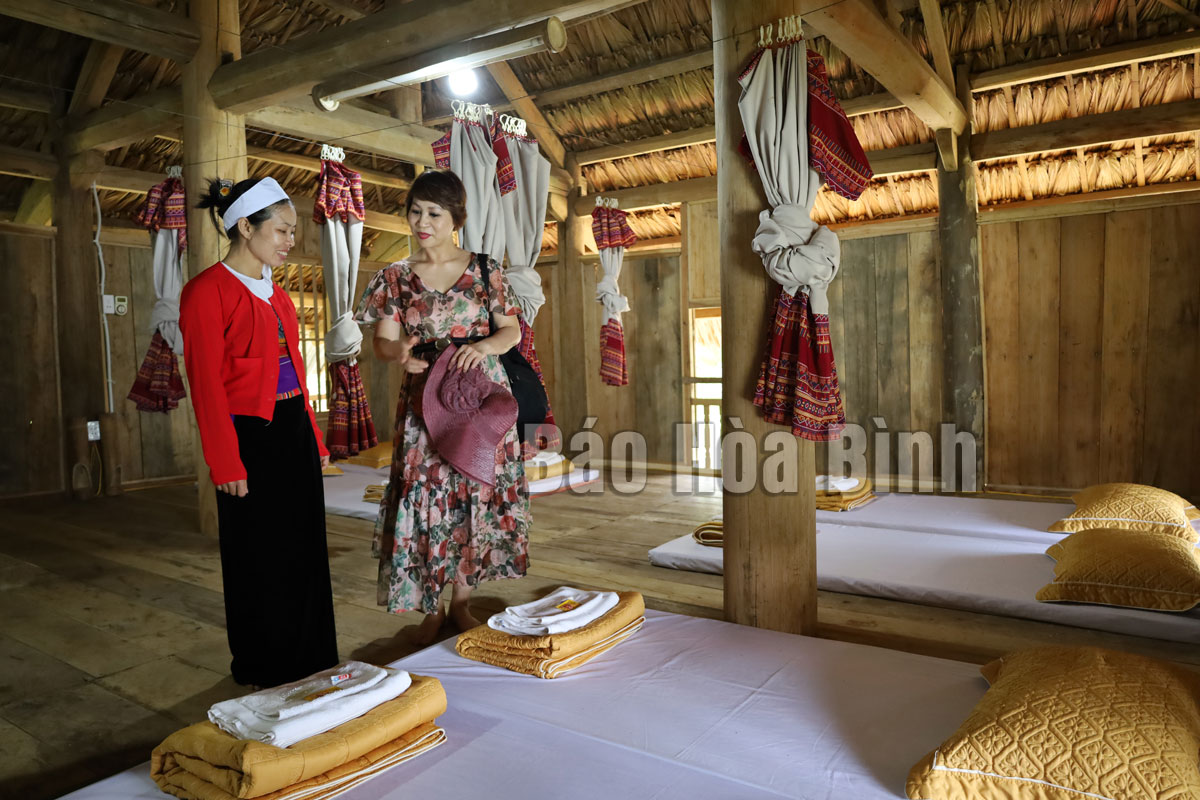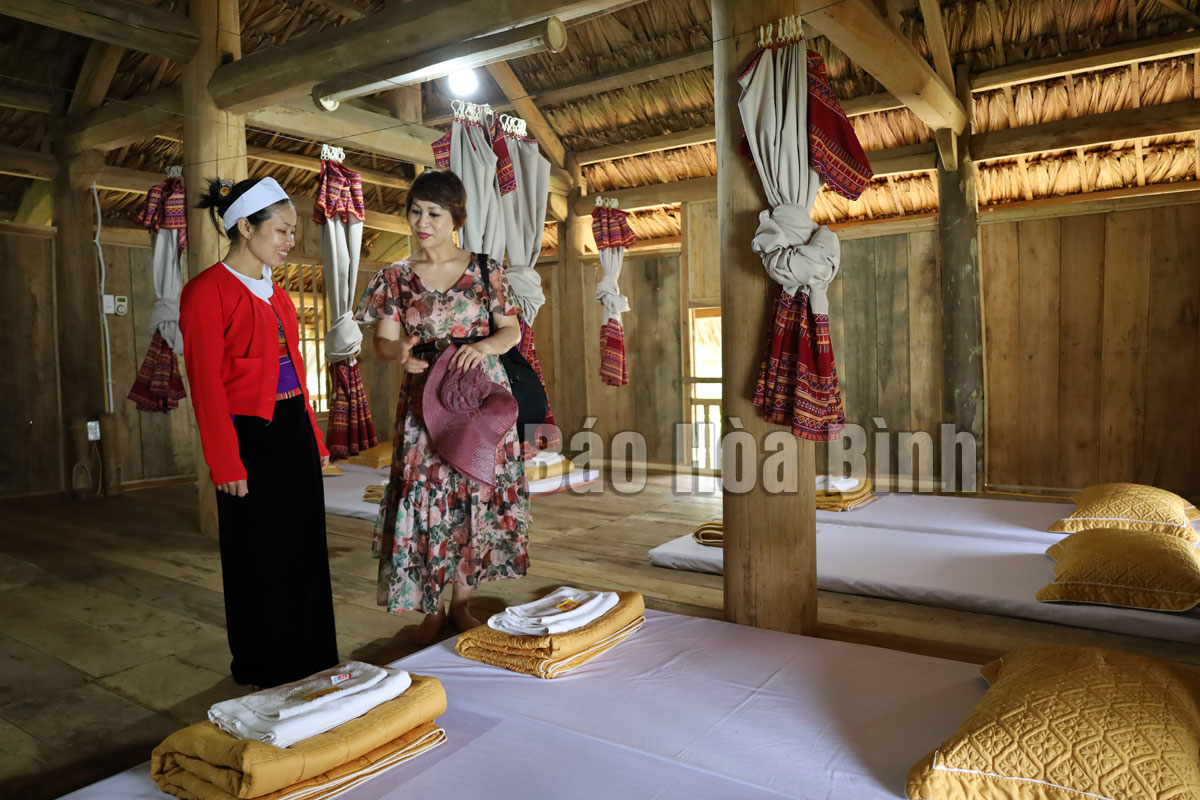
(HBO) - Located in the Hoa Binh lake tourist complex, Ngoi village in Tan Lac district's Suoi Hoa commune, is one of community-based tourist attractions that have been put into operation not long ago. Thanks to the rustic and pristine look, this place has become a familiar address for tourists.
 Many visitors choose Van Hien homestay to experience a night in a stilt house as part of a tour exploring Ngoi village, Suoi Hoa commune (Tan Lac).
Many visitors choose Van Hien homestay to experience a night in a stilt house as part of a tour exploring Ngoi village, Suoi Hoa commune (Tan Lac).
This community tourist site attracts tourists firstly for the charming natural landscape. Coming here, visitors can enjoy the beauty of Ngoi Hoa bay, explore Hoa Tien cave, and discover the beauty of this Muong ethnic village, where 100 percent of the houses retain the traditional architecture of Muong stilt house. Locals also preserve many ethnic customs and practices.
In recent years, a tourism business has discovered the hidden beauty of Ngoi village and invested in the area, creating a destination that has unique cultural values and unique experiences. Vu Anh Ngoc, Deputy Director of Hoa Binh Tourism joint Stock Company said in addition to discovering village life and exploring nature, visitors will be provided with better and more professional services in accommodation.
Here, visitors have the opportunity to participate in the daily life and cultural activities with the locals such as fishing, making local delicacies, weaving baskets to catch fish. They can join in trekking, cave exploration, water motor games, kayaking or just sitting on a boat to enjoy the beautiful scenery on Ngoi Hoa Bay.
Bui Van Mui, Chairman of Suoi Hoa Commune People's Committee said: Ngoi village is one of eight hamlets in the commune, and 100 percent of households in the village are Muong ethnic people. The village will develop tourism in association with the preservation of the local cultural identity and protection of the ecological environment. The province has approved investment policies of four companies for Ngoi village. Hopefully in the near future, tourism projects will open up more opportunities for the locality to more effectively exploit the potential and strengths of the area./.
Located just a 20-minute drive from Hoa Binh City, Ora Hill Farmstay & Glamping Hoa Binh is a captivating new destination nestled in Mo hamlet, Bình Thanh commune, Cao Phong district. Combining farming with leisure, this tranquil retreat is perfect for those seeking balance, joy, and an immersive experience in the expansive beauty of nature.
Muong Bi - Tan Lac is renowned as one of the four famous Muong regions in Hoa Binh province. Blessed by nature with a favourable climate and stunning landscapes, Tan Lac holds great advantages for tourism development. The local tourism industry has made remarkable strides in recent times thanks to the attention and support from the local authorities and sectors.
With its strategic location, well-developed transport network, and diverse soil and climatic conditions, Hoa Binh is emerging as a must-visit destination in Vietnam's northwestern tourism corridor. The province boasts numerous attractions, including the Kim Boi hot springs (Kim Boi district), the Dau Rong cave complex (Cao Phong), the Mai Chau valley (Mai Chau), and the iconic Hoa Binh hydropower plant.
The northern mountainous province of Hoa Binh has been listed among the 71 most beautiful places to visit worldwide by the prestigious US travel magazine Condé Nast Traveller.
Hoa Binh province’s rich natural and cultural resources position it as a prime location for developing community-based tourism (CBT). In recent years, support from central and provincial policies, as well as assistance from non-governmental organisations, have encouraged local ethnic minority and mountainous communities to actively engage in the sector.



 Many visitors choose Van Hien homestay to experience a night in a stilt house as part of a tour exploring Ngoi village, Suoi Hoa commune (Tan Lac).
Many visitors choose Van Hien homestay to experience a night in a stilt house as part of a tour exploring Ngoi village, Suoi Hoa commune (Tan Lac).